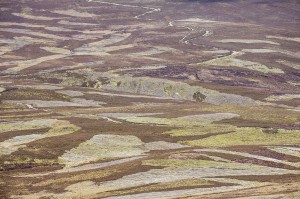
In this week’s Country Life magazine (p32-33) there is one of those For/Against features. This one is on burning and the RSPB’s Dr Pat Thompson wins hands down over the Moorland Association’s Amanda Anderson.
I’m not sure how Country Life would feel about that as they start the ‘debate’ with a complete non sequitur: ‘…heather burning was highlighted in the Committee on Climate Change’s latest report in a way that could be interpreted as an attack on grouse-shooting – even though the red grouse is a species native only to Britain’. Eh? First, what is the function of the words ‘even though’ in that sentence? Simply makes no sense at all to me. Second, it isn’t a species native only to Britain any more than is the Song Thrush. But more importantly, and third, how else would you interpret the words ‘The damaging practice of burning peat to increase grouse yields continues, including on internationally protected sites.’ other than as criticism, and justified criticism, of the unsustainable practice of driven grouse shooting?
Amanda relies for her support on ‘extensive field trips’ whereas Pat quotes a lot of dull, but rather important. science.
The crux of the matter, avoided by the Moorland Association, is the damage done to blanket bogs and deep peat soils by burning – that’s why the UK government is struggling with a complaint to the EU, taken by the RSPB, over this issue. We still wait to hear the result of that complaint. Why is our government floundering? Why isn’t Natural England implementing the results of its own Heather and Grass Burning Code fully and properly which has a strong presumption against burning sensitive areas, including peat bogs and wet heaths?
[registration_form]
I used to think that burning old stands of heather in moderation away from true blanket bog was justifiable and may be so in MODERATION at long intervals. However that is not what grouse managers do anymore. In one area I’ve visited for years it used 25 years ago take hours to walk up a valley to study its several pairs of Merlin because it was mainly long heather and some bracken. Now it takes about one quarter the time as nearly all the long heather has gone with smaller but far more fires much more frequently, indeed if I choose I could walk the entire valley , both sides in heather about ankle high if i zigzag a bit. Needless to say what was 6 pairs of Merlins and regular Hen Harriers is now one or two Merlins and no harriers.
Medicated grit has apparently increased average grouse “yealds” by about 300% and greed seems to have bred greed hence intensifying management leading to all the ills of over burning, decreased biodiversity, no harriers, no peregrines and precious few shorties.
The whole edifice that is driven grouse shooting is ripe for the fall.